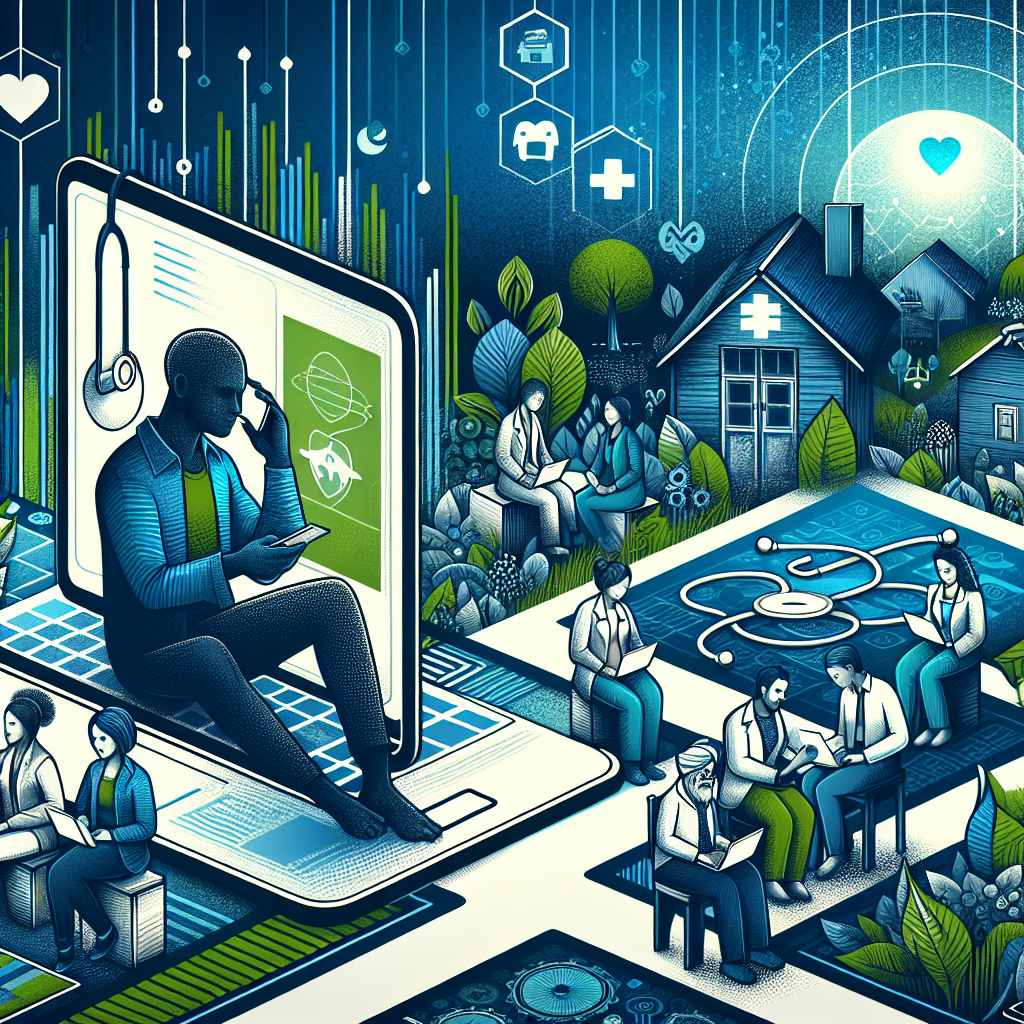
Introduction
In a world where technology is advancing at lightning speed, it’s surprising how many individuals still lack access to essential healthcare services. Imagine living in an area with limited medical facilities, where traveling to see a doctor could mean hours of journey on poor roads. In these situations, telehealth emerges as a beacon of hope. Making Healthcare Accessible: The Role of Telehealth in Underserved Communities shines a light on how this innovative approach is breaking down barriers, enhancing accessibility, and revolutionizing the healthcare landscape for vulnerable populations.
Telehealth is not just a trend; it’s a vital tool that has grown especially relevant in the wake of the COVID-19 pandemic, underscoring the urgent need to address healthcare inequality. In this article, we will explore the transformative power of telehealth, share compelling case studies, and demonstrate its vital importance in making healthcare accessible for underserved communities.
Understanding Telehealth
What is Telehealth?
Telehealth refers to a broad set of technologies and strategies that enhance care delivery, including video consultations, remote monitoring, and mobile health apps. By leveraging the internet and communication technologies, healthcare providers can deliver services without the need for physical presence. This innovation is not merely a convenience; it is a necessity, especially for those who face geographical, financial, or social barriers in accessing care.
The Rise of Telehealth
The growing acceptance of telehealth can be attributed to various factors, including advances in technology, increased smartphone penetration, and a shift in consumer expectations regarding healthcare delivery. The global pandemic further accelerated this trend, with healthcare systems worldwide turning to telehealth to maintain continuity of care while ensuring patient safety.
Telehealth and Underserved Communities
Defining Underserved Communities
Underserved communities typically include racial and ethnic minorities, low-income populations, and individuals living in rural areas. These groups often encounter systemic barriers to healthcare services, leading to disparities in health outcomes.
The Challenges They Face
- Geographical Barriers: Rural areas might lack healthcare facilities.
- Transportation Issues: Limited public transport options can hinder access.
- Financial Constraints: High costs and lack of insurance can prevent individuals from seeking care.
- Cultural Barriers: Language and distrust in the healthcare system can further isolate these populations.
How Telehealth Addresses These Challenges
Overcoming Geographical Barriers: Patients no longer have to travel long distances to consult with specialists. Telehealth allows them to connect with healthcare providers from their homes.
Increased Convenience: Virtual appointments eliminate the need for travel, saving time and resources.
Cost-Effectiveness: Many telehealth services lower the cost of healthcare delivery. Insurance companies are increasingly covering these services, making them more accessible to low-income families.
- Culturally Competent Care: Many telehealth platforms now provide interpretation services, ensuring patients who speak different languages receive the help they need.
Table 1: Benefits of Telehealth in Underserved Communities
| Mindset | Aspects Addressed | Key Benefits |
|---|---|---|
| Accessibility | Travel time and costs | Patients can consult from home |
| Affordability | High costs of in-person visits | Lower fees and wider coverage |
| Safety | Exposure to infectious diseases | Remote consultations minimize risk |
| Quality Care | Access to specialists and resources | Better health outcomes |
Case Studies: Telehealth in Action
Case Study 1: Project ECHO
Overview: Project ECHO (Extension for Community Healthcare Outcomes) is a global telehealth initiative aimed at expanding access to specialty care.
Relevance: By connecting primary care providers in underserved areas with specialists in urban centers, Project ECHO empowers local health workers, facilitating better patient management in chronic diseases like diabetes and hepatitis C.
Analysis: This model shows how collaborative telehealth can drastically improve care delivery and education in underserved communities, leveraging existing resources effectively.
Case Study 2: Connected Care in Rural Appalachia
Overview: A pilot program in rural Appalachia integrated telehealth services into local health clinics.
Relevance: By utilizing telehealth, the program significantly reduced travel burdens and wait times for patients needing specialist consultations.
Analysis: The success of this initiative demonstrates the potential of telehealth to address geographical challenges, enhance patient satisfaction, and improve healthcare outcomes.
Case Study 3: Telehealth & Behavioral Health
Overview: Many underserved communities face significant barriers to mental health care. Telehealth initiatives aimed at providing behavioral health services have gained traction recently.
Relevance: By offering services via video conferencing, providers can reach individuals who might otherwise feel stigmatized or overwhelmed by traditional therapy settings.
Analysis: This case underlines the versatility and necessity of telehealth in addressing not just physical but also mental health needs in underserved areas.
The Future of Telehealth in Underserved Communities
Barriers to Growth
While telehealth offers immense potential, several obstacles still hinder its full implementation:
- Technology Access: Not everyone has reliable internet access or mobile devices.
- Regulatory Challenges: Licensing and reimbursement policies can vary by state and often limit telehealth use.
- Quality Concerns: Questions regarding how to ensure the quality of care received through telehealth compared to traditional methods persist.
Opportunities Ahead
- Policy Improvements: Educating policymakers on the benefits of telehealth can lead to more supportive regulations and funding.
- Infrastructure Development: Investments in broadband and technology can increase access for underserved populations.
- Community Engagement: Local organizations can help raise awareness and educate communities on how to utilize telehealth services effectively.
Conclusion
The significance of Making Healthcare Accessible: The Role of Telehealth in Underserved Communities cannot be overstated. As we look toward the future, the integration of telehealth in these areas represents not just an exciting opportunity for improvement but a critical necessity for equity in health care.
The path forward is clear: investing in technology, fostering community engagement, and shaping favorable policy will empower underserved populations to access the care they need and deserve. The future of healthcare must prioritize these vulnerable communities because health is a basic human right. Let us commit to making this vision a reality.
FAQs
1. What is telehealth, and how does it work?
Telehealth utilizes technology to deliver health services remotely, including virtual consultations and telemonitoring, enhancing access and convenience for patients.
2. How does telehealth improve healthcare access for underserved communities?
By eliminating geographical and financial barriers, telehealth enables patients to consult with healthcare providers from their homes, increasing convenience and reducing costs.
3. Are there limitations to telehealth?
Yes, limitations include potential technology access issues, regulatory challenges, and quality concerns. However, ongoing efforts to overcome these barriers are underway.
4. Can telehealth address mental health needs?
Absolutely! Telehealth has demonstrated great success in delivering behavioral health services, making mental health care more accessible for those who might feel stigmatized or overwhelmed.
5. How can communities support the growth of telehealth?
Communities can raise awareness of telehealth services, engage local organizations to provide education, and advocate for the necessary infrastructure and policy changes.
Making Healthcare Accessible: The Role of Telehealth in Underserved Communities represents an ongoing journey—one that calls for collective action, innovation, and compassion in reshaping how we view and deliver healthcare.














